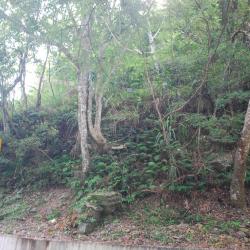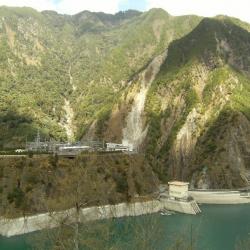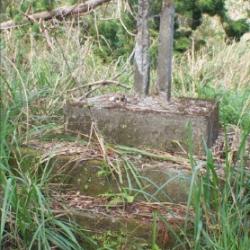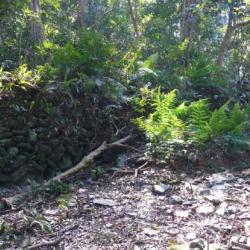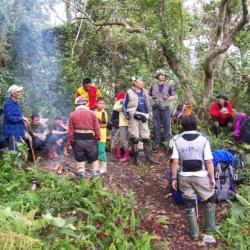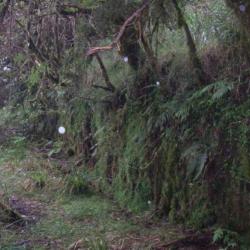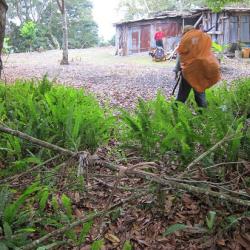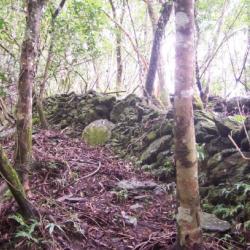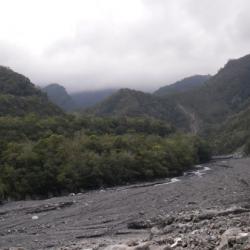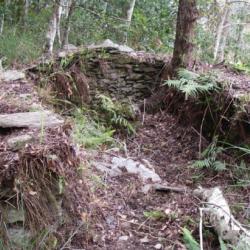The Taman River Police Post is located on the mountain opposite the southern side of the Dahan Bridge parking lot in Fuxing District of Taoyuan City. When the construction of the Northern Cross-island Highway began in 1963, many railway bridges that were built during the Japanese occupation were demolished and reconstructed because most of the routes overlapped with the Jiaobanshan Sanxing Historic Trail. The Taman River Suspension Bridge, that was next to Taman River Police Post, was also rebuilt into the Dahan Bridge, which overlooks the narrow valley of Taman River and the Baling area.
Today, in the woods on the mountain opposite the parking lot, the remains of the stacked stones from Taman River Police Post can still be found.
